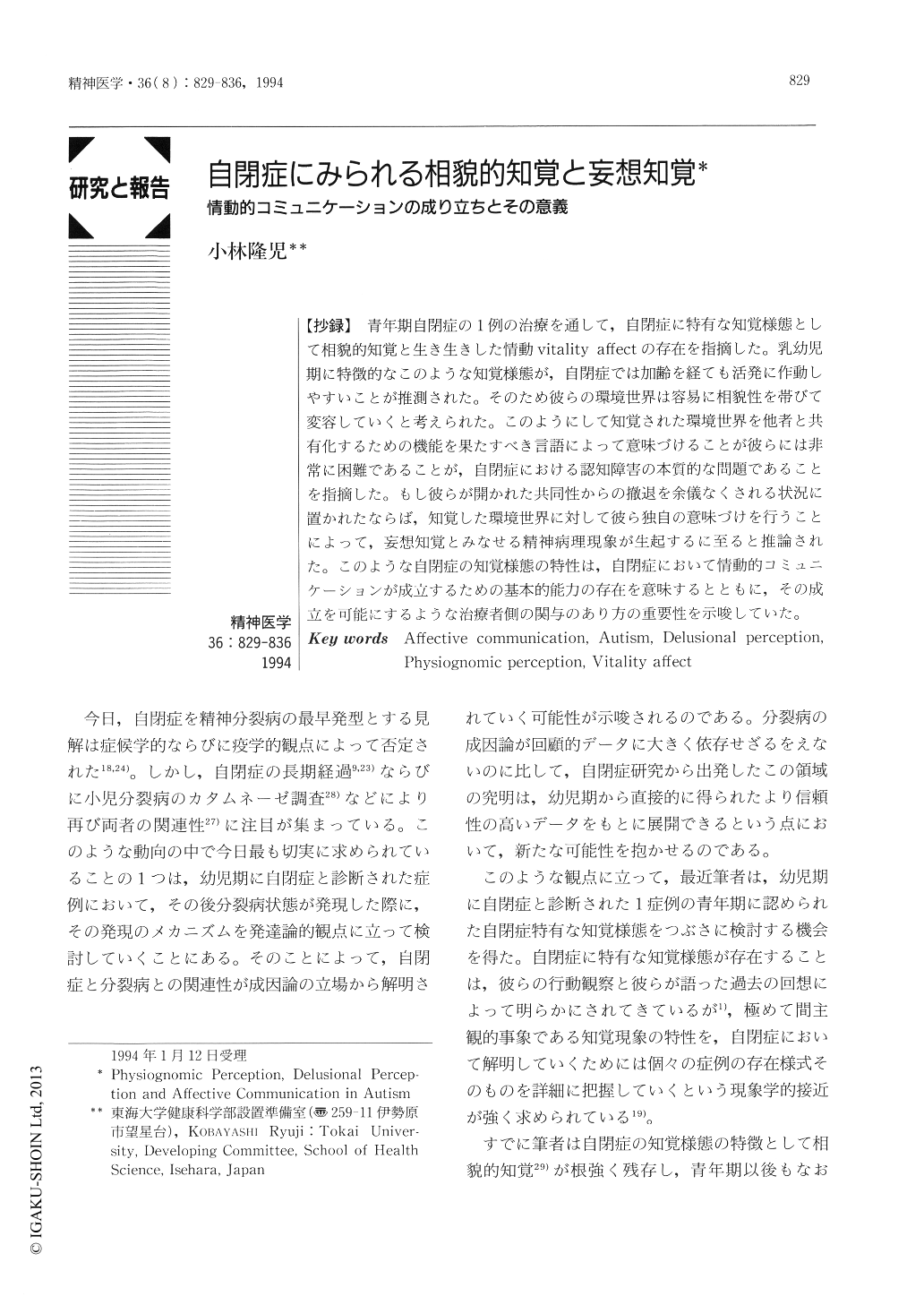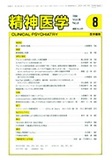Japanese
English
- 有料閲覧
- Abstract 文献概要
- 1ページ目 Look Inside
【抄録】 青年期自閉症の1例の治療を通して,自閉症に特有な知覚様態として相貌的知覚と生き生きした情動vitality affectの存在を指摘した。乳幼児期に特徴的なこのような知覚様態が,自閉症では加齢を経ても活発に作動しやすいことが推測された。そのため彼らの環境世界は容易に相貌性を帯びて変容していくと考えられた。このようにして知覚された環境世界を他者と共有化するための機能を果たすべき言語によって意味づけることが彼らには非常に困難であることが,自閉症における認知障害の本質的な問題であることを指摘した。もし彼らが開かれた共同性からの撤退を余儀なくされる状況に置かれたならば,知覚した環境世界に対して彼ら独自の意味づけを行うことによって,妄想知覚とみなせる精神病理現象が生起するに至ると推論された。このような自閉症の知覚様態の特性は,自閉症において情動的コミュニケーションが成立するための基本的能力の存在を意味するとともに,その成立を可能にするような治療者側の関与のあり方の重要性を示唆していた。
The author pointed out that physiognomic perception and vitality affects are easily activated in cases of young female adults with autism. Such a perceptual mode is supposed to be very characteristic not only in early infancy but also in autism. As a result, autistic people tend to perceive their environment, the things-around-them, physiognomically. We can easily recognize and label those things-around-them because of our language ability. Language helps us to put our surroundings in a state of order. But autistic people have such poor cognitive-language ability, that it would be very difficult for them to take what they perceive as being in a state of order and communicate it through language. Such an active perceptual mode in autism reveals not an affective communication deficit, but the hyper-activity of perception in motor-affective manner. This might suggest that autistic people have an innate ability to have affective communication. Physiognomic perception, as well as vitality affects play an important role in affective communication. If autistic people could not have affective communication with others, they could not share the meaning of what they perceive physiognomically. As a result, they would draw unusual meanings about what they are exposed to. Such a psychopathological process might be called “delusional perception.”
How and what they perceive and what meaning they draw from their perceptions is a most important problem in the cognitive deficits in autism. In the treatment of autism, knowledge of this may be helpful in enabling us to help autistic people to have affective communication not only with their mothers but also with their therapists.

Copyright © 1994, Igaku-Shoin Ltd. All rights reserved.


